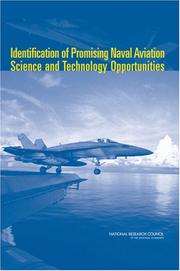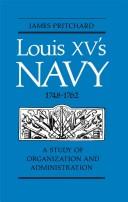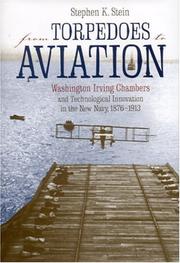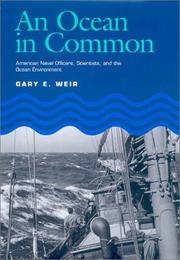| Listing 1 - 10 of 58 | << page >> |
Sort by
|

ISBN: 1280447265 9786610447268 030965274X 9780309652742 0309097290 9780309097291 0309180635 Year: 2006 Publisher: Washington, D.C. : National Academies Press,
Abstract | Keywords | Export | Availability | Bookmark
 Loading...
Loading...Choose an application
- Reference Manager
- EndNote
- RefWorks (Direct export to RefWorks)
Naval art and science --- Fighting --- Naval administration --- Naval science --- Naval warfare --- Navy --- War, Maritime --- War --- Military art and science --- Navies --- Navigation --- United States. --- U.S. Navy --- Aviation.

ISBN: 1282850822 9786612850820 0773561196 9780773561199 0773505709 9780773505704 Year: 1987 Publisher: Kingston, Ont. McGill-Queen's University Press
Abstract | Keywords | Export | Availability | Bookmark
 Loading...
Loading...Choose an application
- Reference Manager
- EndNote
- RefWorks (Direct export to RefWorks)
Pritchard's chief concern is to explain why Bourbon France, the richest and most poewerful state in Europe in the middle of the eighteenth century, failed to exercise its power at sea. Through a close examination of naval organization -- the secretaries of state for the navy, central bureaus, officers of the sword and pen, seamen, arsenals, workers, probems of shipbuilding, ordnance production and material acquisition, and finances -- he shows the navy as both an institution embedded in society and an instrument of government. The tensions arising from the contradiction between an institution composed of individuals who sought to advance their own and group interests and an instrument that existed to fulfil government ends were aggravated by an administation of men rather than norms. Pritchard traces many of the shortcomings of naval administratrion to the intensely personal bonds and idiosyncratic behaviour of the individuals who ran it. Many of Pritchards's conclusions run counter to the generallly accepted accounts of problems in the French navy during this period and to the usual view of Choiseul as the saviour of French maritime power. The first complete study of this period of French naval administration, Pritchard's work parallels Baugh's on the British navy.
Naval art and science --- Fighting --- Naval administration --- Naval science --- Naval warfare --- Navy --- War, Maritime --- War --- Military art and science --- Navies --- Navigation --- France. --- Organization --- History --- Management
Book
ISBN: 1783833076 1473812399 9781783833078 9781473812390 9781848320024 1848320027 Year: 2008 Publisher: Barnsley
Abstract | Keywords | Export | Availability | Bookmark
 Loading...
Loading...Choose an application
- Reference Manager
- EndNote
- RefWorks (Direct export to RefWorks)
This remarkable work is a comprehensive historiographical and bibliographical survey of the most important scholarly and printed materials about the naval and maritime history of England and Great Britain from the earliest times to 1815. More than 4,000 popular, standard and official histories, important articles in journals and periodicals, anthologies, conference, symposium and seminar papers, guides, documents and doctoral theses are covered so that the emphasis is the broadest possible. But the work is far, far more than a listing. The works are all evaluated, assessed and analysed and the
Naval art and science --- Fighting --- Naval administration --- Naval science --- Naval warfare --- Navy --- War, Maritime --- War --- Military art and science --- Navies --- Navigation --- Great Britain --- History, Naval
Book
ISBN: 2901952097 Year: 1993 Publisher: Paris SPM
Abstract | Keywords | Export | Availability | Bookmark
 Loading...
Loading...Choose an application
- Reference Manager
- EndNote
- RefWorks (Direct export to RefWorks)
Naval art and science --- -Fighting --- Naval administration --- Naval science --- Naval warfare --- Navy --- War, Maritime --- War --- Military art and science --- Navies --- Navigation --- History --- Military history --- Naval history --- History. --- Ancient world --- Seafaring
Book
ISBN: 0816026971 Year: 1998 Publisher: New York (N.Y.): Facts on File
Abstract | Keywords | Export | Availability | Bookmark
 Loading...
Loading...Choose an application
- Reference Manager
- EndNote
- RefWorks (Direct export to RefWorks)
Naval art and science --- Art et science navals --- History --- Dictionaries --- Dictionnaires anglais --- Fighting --- Naval administration --- Naval science --- Naval warfare --- Navy --- War, Maritime --- War --- Military art and science --- Navies --- Navigation --- History&delete& --- Encyclopedias

ISBN: 0817381058 9780817381059 9780817315641 0817315640 Year: 2007 Publisher: Tuscaloosa, Ala. University of Alabama Press
Abstract | Keywords | Export | Availability | Bookmark
 Loading...
Loading...Choose an application
- Reference Manager
- EndNote
- RefWorks (Direct export to RefWorks)
The central figure in the modernization of the U.S. Navy. The career of Washington Irving Chambers spans a formative period in the development of the United States Navy: He entered the Naval Academy in the doldrum years of obsolete, often rotting ships, and left after he had helped like-minded officers convince Congress and the public of the need to adopt a new naval strategy built around a fleet of technologically advanced battleships. He also laid the groundwork for naval aviation and the important role it would play in the modern navy. This work covers Chambers's e
Naval art and science --- Fighting --- Naval administration --- Naval science --- Naval warfare --- Navy --- War, Maritime --- War --- Military art and science --- Navies --- Navigation --- Technological innovations --- History --- Chambers, Washington Irving, --- Chambers, Washington Irving --- United States. --- U.S. Navy --- Officers

ISBN: 0801864860 0801872855 9780801872853 9780801864865 9780801898181 0801898188 Year: 2000 Publisher: Baltimore : Johns Hopkins University Press,
Abstract | Keywords | Export | Availability | Bookmark
 Loading...
Loading...Choose an application
- Reference Manager
- EndNote
- RefWorks (Direct export to RefWorks)
The evolution and persistence of the "battleship navy, he argues, offer direct insight into the dominance of the aircraft-carrier paradigm after 1945 and into the twenty-first century.
Naval art and science --- Fighting --- Naval administration --- Naval science --- Naval warfare --- Navy --- War, Maritime --- War --- Military art and science --- Navies --- Navigation --- Technological innovations --- United States. --- U.S. Navy --- Civilian employees --- Attitudes. --- Officers

ISBN: 1299137997 1603447210 1585449059 9781585449057 9781585441143 1585441147 1585441147 9781299137998 9781603447218 Year: 2001 Publisher: College Station Texas A & M University Press
Abstract | Keywords | Export | Availability | Bookmark
 Loading...
Loading...Choose an application
- Reference Manager
- EndNote
- RefWorks (Direct export to RefWorks)
Naval research --- Marine sciences --- Naval art and science --- Research --- Research, Industrial --- Fighting --- Naval administration --- Naval science --- Naval warfare --- Navy --- War, Maritime --- War --- Military art and science --- Navies --- Navigation --- Ocean sciences --- Aquatic sciences --- History --- United States. --- U.S. Navy --- Officers
Book
ISBN: 0755609166 0857735985 9780857735980 9781848859852 1848859856 Year: 2014 Publisher: London ; New York : I.B. Tauris,
Abstract | Keywords | Export | Availability | Bookmark
 Loading...
Loading...Choose an application
- Reference Manager
- EndNote
- RefWorks (Direct export to RefWorks)
"In the century after 1530 the empires of the Habsburgs of Spain and the Ottoman Turks fought a maritime war that seemed destined to lead nowhere: lasting peace was as unlikely as final triumph, in part because the salient feature of this conflict was a violent form of piracy practiced by the 'corsairs' of North African and Malta. It was fundamentally a war of unequal means, since the Habsburgs of Spain had too few good warships and the Ottomans too many bad ones. Christendom and Islam engaged in a war fought largely through the exercise of private violence: the Hospitaller Knights of Malta and ghazi captains of North Africa succeeded in imposing their crusading ethos on the Mediterranean. If a degree of futility loomed over these campaigns, it was nevertheless true that the Mediterranean witnessed a sustained conflict which in scale and intensity was far greater than that of any contemporary form of warfare at sea. Moreover the sea was never abandoned as, until at least 1620, large galley fleets continued to patrol the inland sea. The raiding methods employed by Elizabethan 'seadogs' like Sir Francis Drake would certainly not have worked in this theatre of arms, as the defences in Italy and North Africa were much more formidable than those of the Atlantic. Phillip Williams begins with a detailed examination of the oared warships used in these campaigns. He then explores the structures of political and military organization and the role of geography and the environment in shaping the fighting; stressing that the Italian territories were of vital significance to the Habsburgs of Spain. He considers the cultural and historical outlook of protagonists such as the Habsburg rulers Charles V and Philip II and the Ottoman Sultan Suleyman the Magnificent, examining the extent to which the dictates of prudence triumphed over ideals of performing 'the service of God'. Providing a unique perspective on early modern maritime conflict, this book will be essential reading for all students and researchers of Mediterranean History and the early modern world."--Bloomsbury Publishing.
Naval battles --- Naval art and science --- Maritime history. --- History --- Fighting --- Naval administration --- Naval science --- Naval warfare --- Navy --- War, Maritime --- War --- Military art and science --- Navies --- Navigation --- Battles, Naval --- Battles --- Naval history --- Sea control
Book
ISBN: 0511731531 1108018408 Year: 2011 Publisher: Cambridge : Cambridge University Press,
Abstract | Keywords | Export | Availability | Bookmark
 Loading...
Loading...Choose an application
- Reference Manager
- EndNote
- RefWorks (Direct export to RefWorks)
'The Naval Chronicle', published in 40 volumes between 1799 & 1818, is a key source for British maritime & military history. This reissue is the first complete printed reproduction of what was the most influential maritime publication of its day. The subjects covered range from accounts of battles & lists of ships to notices of promotions & marriages, courts martial & deaths, & biographies, poetry & letters. Each volume also contains engravings & charts relating to naval engagements & important harbours around the world. Volume 1 (1799) contains English & French accounts of the Battle of the Nile & the Glorious First of June. Technical papers include discussions of an improved pump capstan, ship stability, & the Indian monsoon. There are topographical descriptions of Brest & Southampton, a report on the American navy, & biographies of Admirals Earl Howe, Lord Rodney & Viscount Bridport.
Naval art and science --- History --- Great Britain. --- Officers --- Fighting --- Naval administration --- Naval science --- Naval warfare --- Navy --- War, Maritime --- War --- Military art and science --- Navies --- Navigation --- צי הבריטי --- England and Wales.
| Listing 1 - 10 of 58 | << page >> |
Sort by
|

 Search
Search Feedback
Feedback About UniCat
About UniCat  Help
Help News
News